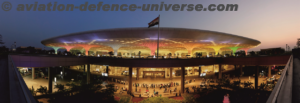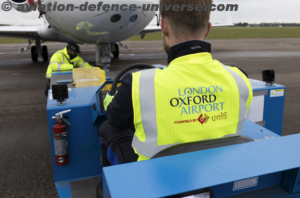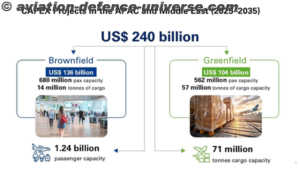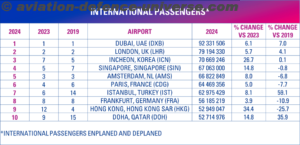Hong Kong SAR. 05 July 2021. A new study by Airports Council International (ACI) World shows that Asia-Pacific and Middle East airports will have to develop new greenfield airports and invest to modernize and expand existing airport infrastructure in the next twenty years to meet future air passenger growth. The Global Outlook of Airport Capital Expenditure forecasts a capital need of US$1.3 trillion for Asia-Pacific airports, accounting for 54% of the global requirement. Middle East airports will need US$151 billion in capital expenditure, or 6% of the global requirement. The projections incorporate the need to align capacity expansion projects with sustainability and decarbonization goals.
To respond to the region’s rapid passenger growth, about 44% of the 2021–2040 Asia-Pacific regional airport capital expenditure is forecasted to be allocated to the construction of brand-new airports – so-called greenfield airports- to the sum of US$579 billion. In the Middle East, greenfield airport projects are expected to comprise around 36%, or US$54 billion, of total regional airport capital expenditure.
“Failure to address the capacity needs to meet the 2040 passenger demand will have profound socio-economic consequences, in terms of job and GDP losses but also congestion and damage to the environment,” said Stefano Baronci, Director General, ACI Asia-Pacific.
Although the short-to-medium term recovery trajectory is highly uncertain, over the next twenty years, the World Annual Traffic Forecasts expects global traffic to return to previously projected levels, placing Asia-Pacific and the Middle East among the fastest-growing regions in the world. Total passenger traffic is forecasted to grow fast at a compound growth rate of 4.7% in Asia-Pacific and 5.2% in the Middle East.
While some airports have deferred or suspended capital investments over the course of the pandemic, many in major and fast-developing aviation markets such as Australia, China, Japan, Philippines, South Korea, Thailand and Vietnam have continued their capital expenditure plans given the long-term horizon that goes well beyond the potential duration of the crisis.
Airports have long taken a leadership role in addressing, minimizing, and mitigating the environmental impacts of aviation. The report shows it takes an average of six years to achieve carbon neutral accreditation under the Airport Carbon Accreditation programme. To realise the ambitious pathways to net zero carbon emissions by 2050, the stated long-term carbon goal of ACI member airports, additional capital investment decisions by airports, such as investment in energy-efficient infrastructure and retrofitting, low emissions/electric vehicles and equipment and construction of onsite or offsite renewable energy facilities, might be required.
“For many airports in Asia and the Middle East, planning for the future means being ready to welcome the passengers of the future while also investing today for a more sustainable infrastructure with a diminished carbon footprint. Historical data shows that airports that achieved carbon neutrality status, invested an average of 12% more capital. By making additional investments now to reduce energy consumption and convert to zero carbon emissions sources, airports will position themselves as sustainable stewards for the future,” concluded Baronci.
The report was funded by Hamad International Airport (HIA).
“The longevity of the global aviation industry can be significantly enhanced by investing in sustainable aviation infrastructure and developing clear sustainability goals. HIA’s support for and endorsement of this study is in the hopes to raise awareness about the aviation industry’s sustainable progress and the necessity to invest in airport infrastructure, especially in the aftermath of COVID-19. The study validates the need for investment in capital expenditure to expedite the recovery of the industry as well as the economy as a whole,” said Engr. Badr Mohammed Al-Meer, Chief Operating Officer, Hamad International Airport.
































































































































